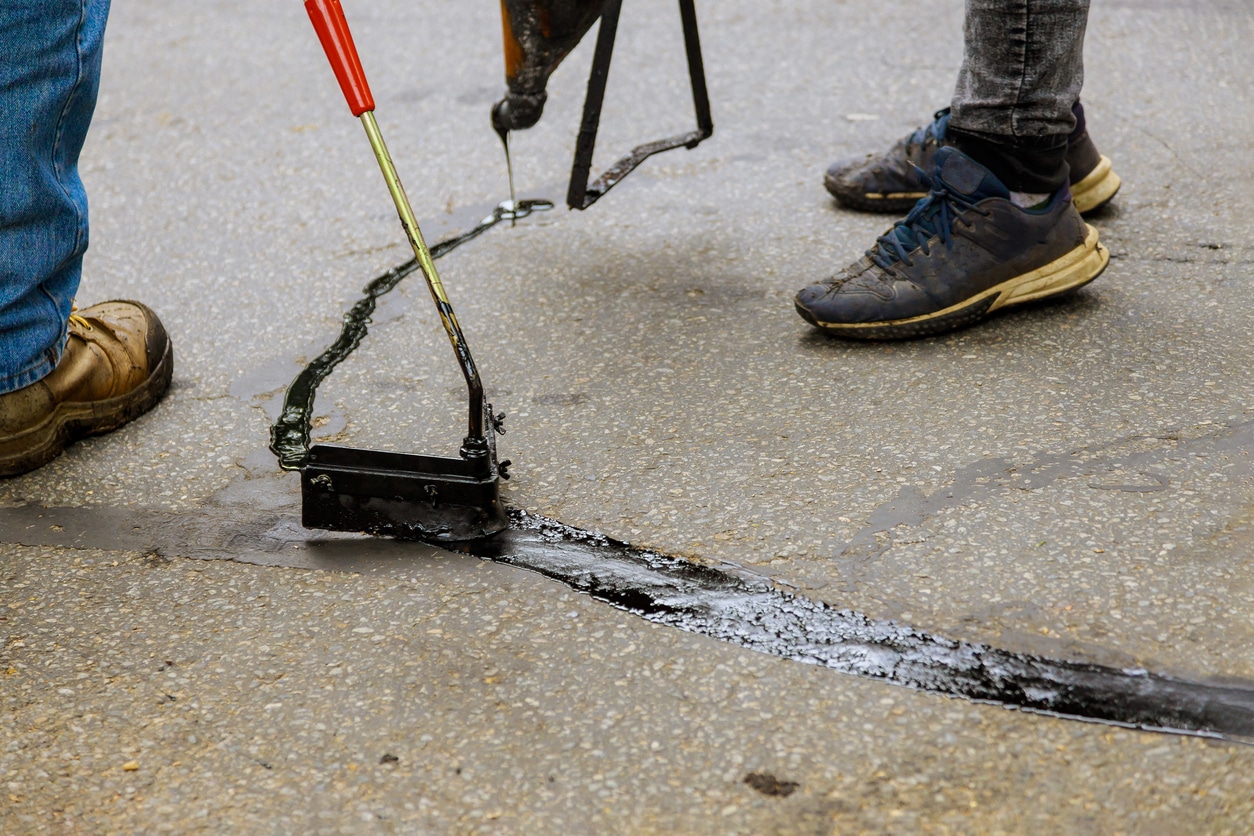Make The Most Of Security with Angle Parking Areas: Superior Asphalt Sealing
Cold Mix Asphalt Vs. Hot Mix Asphalt: Which Is Right for You?

Composition Distinctions
Cold mix and warm mix asphalts differ significantly in their make-up, with distinctive characteristics that affect their efficiency and applications. Cold mix asphalt is produced by emulsifying the asphalt binder with water and an emulsifying representative prior to mixing it with aggregate. This approach enables the asphalt to be practical at reduced temperatures, making it suitable for short-lived repair services and for usage in cooler climate condition. Hot mix asphalt, on the various other hand, is made at heats, generally between 300-350 ° F, which aids to achieve better compaction and a much more long lasting last item. The warm mix asphalt manufacturing process entails heating the aggregate and asphalt binder individually before integrating them at the asphalt plant.
In addition, cool mix asphalt has a tendency to be much less dense and extra adaptable than hot mix asphalt. This adaptability makes it far better fit for areas with greater levels of motion, such as driveways or roadways with hefty website traffic. In contrast, warm mix asphalt is known for its high sturdiness and resistance to rutting and breaking, making it a recommended choice for freeways and high-traffic roadways where long life is essential.
Setup Process Differences
The procedure of mounting chilly mix and hot mix asphalt displays significant differences in their needs and procedures. Cold mix asphalt, being a more versatile product, can be applied straight from the bag or container onto the pothole or harmed location. It calls for marginal preparation work, such as cleansing the area and condensing the cool combine with hand tools. This makes it a hassle-free option for short-lived and fast fixes. On the other hand, warm mix asphalt demands a more intricate installation process. It involves heating up the combination to heats before laying it down on a correctly ready base. The prep work includes condensing the base, applying a tack coat, and utilizing hefty equipment like pavers and compactors for a smooth and resilient coating. As a result of the heating demands, warm mix asphalt installations are commonly brought out by professionals with specialized tools, making certain a much more permanent and structurally audio result.
Sturdiness and Long Life Variables
When check my source considering asphalt options, resilience and longevity are critical elements to examine for long-term pavement performance. Warm mix asphalt (HMA) is known for its remarkable sturdiness and longevity.
In regards to longevity, HMA normally outmatches CMA because of its exceptional toughness and resistance properties. HMA pavements have a longer service life, calling for less constant repair services and maintenance, which can convert to set you back savings in the lengthy run. Furthermore, HMA pavements are more conveniently customizable to fulfill specific task requirements, better enhancing their longevity.
Price Considerations
Thinking about the monetary effects is an essential aspect when assessing the choice between warm mix asphalt (HMA) and chilly mix asphalt (CMA) for pavement projects. While the initial price of hot mix asphalt is generally higher than that of cold mix asphalt, HMA frequently offers a much more economical service in the long run due to its superior resilience and durability.
In enhancement to product costs, it's necessary to consider the costs connected with installment and maintenance when comparing HMA and CMA. Ultimately, the choice in between HMA and CMA should take right into account not just the preliminary cost but additionally the long-term economic effects to determine the most affordable choice for the specific pavement job.
Environmental Effect Comparison
Comparison of the environmental impacts between warm mix asphalt (HMA) and cool mix asphalt (CMA) reveals distinctive differences in sustainability techniques. HMA production needs high temperature levels, leading to enhanced energy intake and greenhouse gas exhausts.
Moreover, using CMA often involves recycling existing asphalt pavement, promoting source preservation and decreasing the quantity of waste sent to landfills. This recycling aspect further boosts the sustainability of CMA contrasted to HMA. In general, when considering the ecological impact, CMA emerges as a more ecologically lasting choice because of its reduced power requirements, minimized discharges, and the possibility for recycling existing products. By selecting CMA over HMA, road building and construction projects can contribute positively to environmental preservation initiatives.
Final Thought
In final thought, the selection between cool mix asphalt (CMA) and hot mix asphalt (HMA) relies on various variables such as structure, installment procedure, longevity, long life, price, and ecological effect. asphalt repair. While CMA offers a economical and fast option for minor repair services, HMA ensures premium resilience and long life for hefty traffic locations. Think about these variables carefully to figure out which kind of asphalt is the best selection browse around this site for your paving needs

Thinking about the monetary implications is a critical element when evaluating the selection in between hot mix asphalt (HMA) and cold mix asphalt (CMA) for pavement tasks. While the preliminary price of warm mix asphalt is generally greater than that of cold mix asphalt, HMA typically supplies a more cost-efficient option in the long run due to its superior longevity and long life. asphalt repair.Contrast of the ecological influences between hot mix asphalt (HMA) and cold mix asphalt (CMA) reveals distinct differences in sustainability methods.In conclusion, the choice in between cold mix asphalt (CMA) and warm mix asphalt (HMA) depends on different variables such as structure, look at here now installment procedure, resilience, long life, expense, and environmental influence